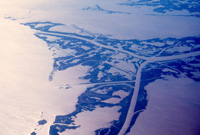Terrebonne ParishThe Terrebonne Parish Recovery Plan is being converted to the RPT With 2,066 square miles at the center of Louisiana’s Gulf coast, Terrebonne is Louisiana’s second largest parish. And it’s more than ninety percent wetlands. What this astounding fact means for the people who live here is apparent: their traditional lifestyle is tied to the land, the Gulf and a unique mixture of the two. What Terrebonne means to the nation deserves more explanation - and attention. It’s a restaurant for a half the hemisphere’s migratory birds, a hatching area for a third of the nation’s seafood and, more important than ever, a vital link in a chain of support for America’s supply of oil and natural gas. Before the parish was officially organized in 1822, trappers and fishermen explored Terrebonne and found bald eagles, fertile soil and every seafood and trapping animal available. In the 1920s, discovery of natural gas began a robust expansion of industry that married the parish economy with mineral exploration. In recent decades, medical, retailing and lighter industrial trades have rounded out the diversity of the area. But Terrebonne will always be tied, for better or worse, to the coast. A top priority among parish leaders is publicizing the desperate condition of Louisiana’s coast. The Gulf is literally inching toward the doorstep of Terrebonne. Man-made canals slice through the marsh, land is naturally sinking, saltwater intrusion is killing grasses and destroying estuaries as wave after wave of storms smooth the geography. The result? Storm surges are more devastating and there are less barriers to slow hurricanes from tearing into the vanishing coast, laving more destruction father inland than ever before. |








